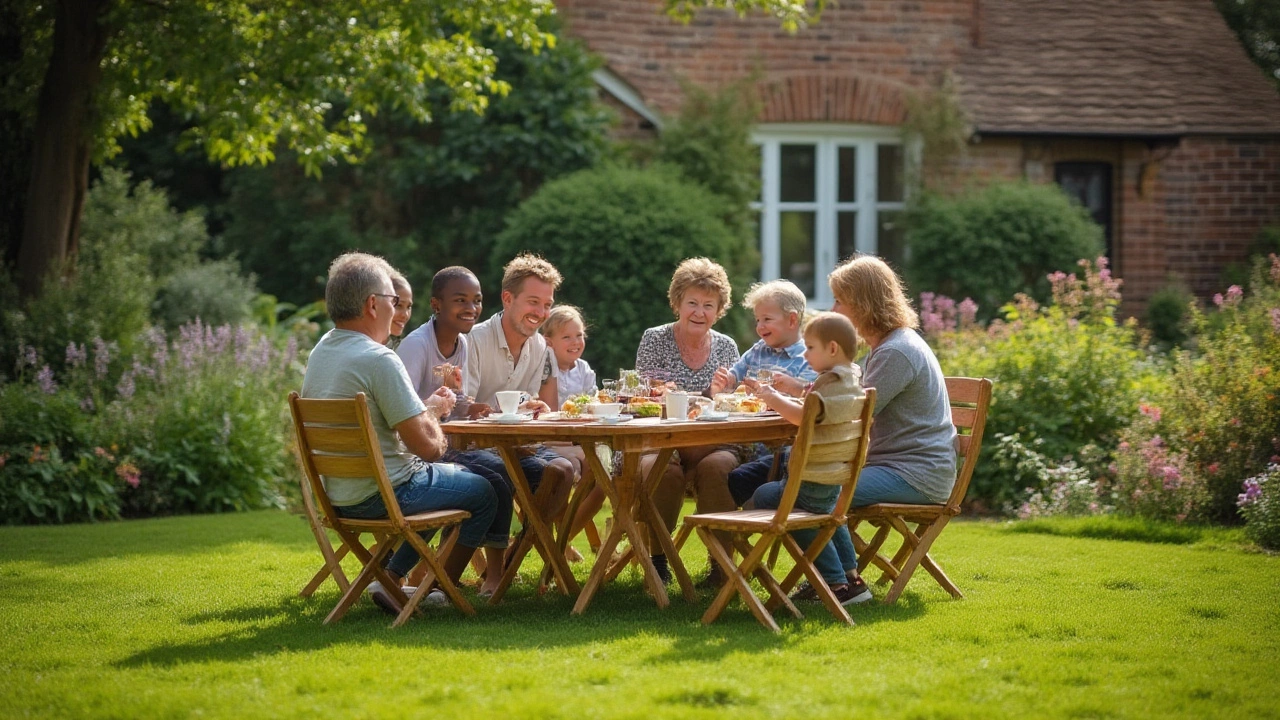Curious if you can safely put garden furniture on grass? Get practical advice, pros and cons, material tips, and tricks to protect your lawn and furniture.
Outdoor Furniture on Grass: How to Choose, Place and Care for It
Putting a lounge set or dining table directly on a lawn looks great, but it can turn your grass into a mess fast. The key is to pick the right pieces, protect the soil, and keep everything tidy. Below you’ll find easy steps that work for any budget, so your garden stays green while you relax.
Picking the Right Furniture for Grass
Start with materials that won’t rust, warp or stain the grass. Powder‑coated aluminum, synthetic rattan and teak are good choices – they resist water and UV light. Heavy metal frames can dig into soft soil, so lightweight metal or sturdy plastic legs are smarter for lawns. Look for legs with a wide base; they spread weight and reduce sink‑in.
Size matters too. A huge sofa might look awesome, but if it’s too big it will crush the grass underneath. Measure your space and leave a few inches of grass around each piece. This gives the soil room to breathe and makes cleaning easier. When you’re buying a set, think about the layout – a low coffee table can sit on a rug or mat, while a taller dining table needs a stable base.
Style doesn’t have to suffer. Choose cushions with quick‑dry fabric and removable covers – they’re easy to wash after a muddy day. Neutral colours hide dirt better, but a splash of bright hue can add personality without screaming for attention. Look for furniture with built‑in storage; a bench with a hidden compartment can stash cushions during wet weather.
Protecting and Maintaining Your Lawn
Even the best furniture will press down on grass over time. A simple solution is to lay a protective mat or deck tiles under each piece. Interlocking tiles snap together and create a flat surface that lets water flow through, keeping the grass healthy. If you prefer a softer feel, use a rubber lawn pad – it spreads weight and cushions the ground.
Cleaning is easier when you act fast. Sweep away leaves and debris after each use, and hose down the area to rinse off mud. For stubborn stains, a mix of water and mild soap works well; avoid harsh chemicals that can harm the soil. When the season changes, consider storing lightweight chairs and tables in a garage or shed to protect them from rain and frost.
If you’re on a tight budget, DIY solutions can save money. Old pallets, for example, can be turned into a sturdy base for a table. Just sand them smooth and add a water‑proof sealant. A few garden pebbles placed under furniture legs also reduce soil compaction while giving a neat look.
Safety is the last piece of the puzzle. Make sure furniture is stable – wobbling chairs can tip over kids or pets. Check that all screws are tight and that none of the legs are cracked. Adding a simple corner guard to sharp edges protects little fingers during playtime.
With the right choices and a bit of upkeep, outdoor furniture can sit happily on grass for years. Pick durable materials, use a protective base, clean regularly and store wisely. Your lawn will stay lush, and you’ll have a comfortable spot to enjoy the fresh air.
